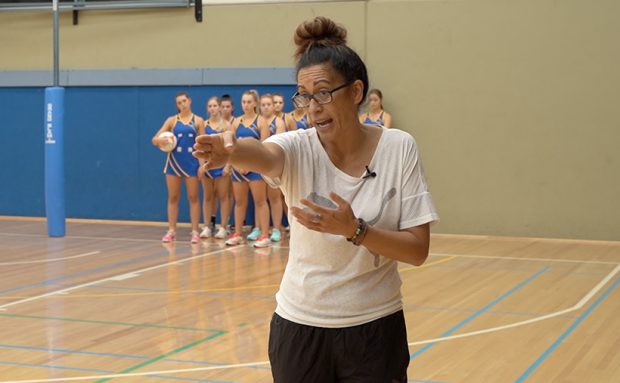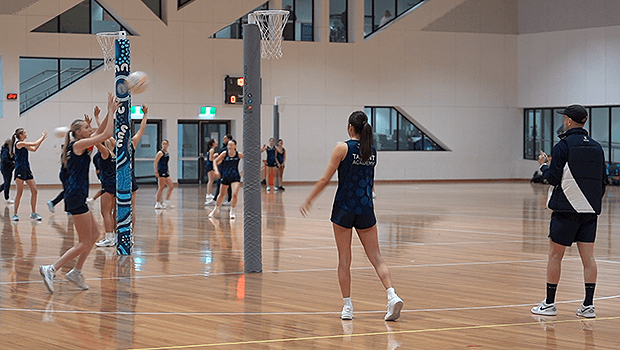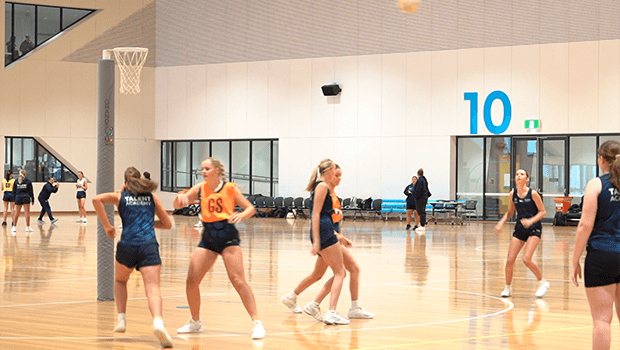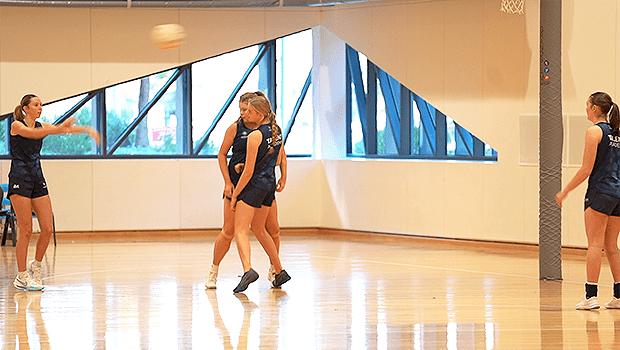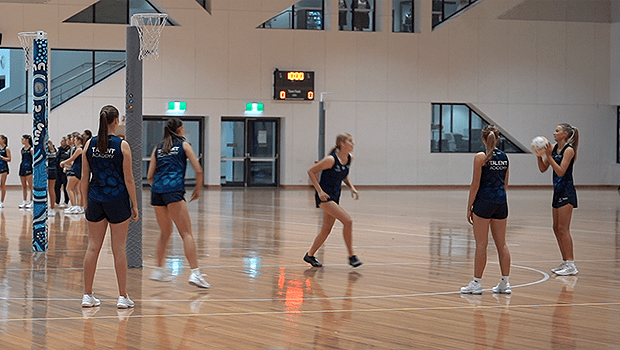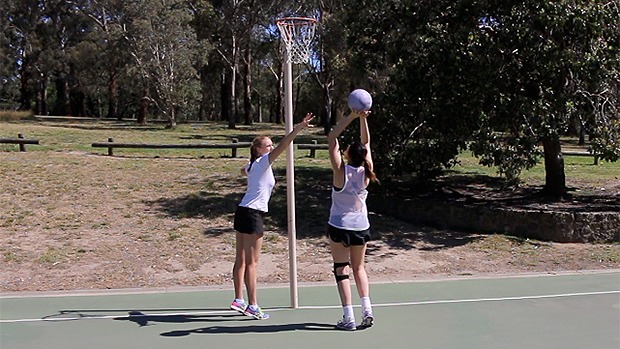
One of the great things about netball is that despite being subject to a gazillion rules and restrictions, there’s still room for personal flair, technique and creativity.
While as coaches we almost always teach skills in a certain way (knowing that those techniques have stood the test of time and will hold players in good stead in years to come), each player will still have their own slight (or significant) variation on those themes.
As a Suncorp Super Netball assistant coach once said to us, if you were demonstrating textbook defensive footwork and other basics to aspiring young netballers, you definitely wouldn’t show them a video of Laura Geitz, and yet Geitz will go down as one of Australia’s greatest ever netballers because despite being unorthodox in some areas, she possesses an almost unrivalled ability to impact the play and just make things happen.
And it’s the same with goalers. Every goaler’s technique is different in some way. You wouldn’t teach Caitlin Thwaites’ technique to your players, but it certainly works for her!
NEED TO CORRECT A GOALER’S TECHNIQUE? TRY OUR TECHNIQUE CORRECTION SESSION
But while some players possess great technique, or make their technique work for them, others struggle with poor techniques that they’ve been saddled with since day one.
We’ve been lucky enough to attend many, many trials and selections for clubs and teams at all levels over the last six weeks, and the number of aspiring players struggling to be accurate due to very, very poor techniques never ceases to amaze us.
So should you change a goaler’s technique?
Start by asking yourself (and the goaler) a few questions:
- Is the goaler consistently accurate? While not every goaler has a textbook (or even aesthetically pleasing) technique, are they shooting at 80+% accuracy week in and week out, against all types of opposition?
- Do they maintain their accuracy under pressure? For some goalers, they’re fine until those big games, quarters, or moments, when a case of the “yips” hits them and their accuracy deserts them. Does that happen to the goaler in question?
- Will their technique stand up as the defenders get older, taller and more skilled? It’s always difficult to predict how players will handle it as they move up a level or age group. For some, it’ll present no issues, while others will really struggle. For example, shorter goalers who drop the ball down low in front of their head, similar to a basketballer, may find it very tough to shoot over taller opposition.
- Is there a lot going on? Our goaling philosophy has always been simple: reduce the number of moving parts (or the amount of movement within those parts) and there’s less that can go wrong, particularly when a player is under pressure and becomes tense. If a player has crazy amounts of elbow bend or pushes the ball with two hands, for example, there’s a lot of factors influencing each shot, and it might be hard to be consistent.
If you do feel it’s time to alter a goaler’s technique, it’s important to remember the fundamental components of a good technique, as well as some key advice for working through any tweaks or changes you (and they) decide to make.
REMEMBER THE BASICS
CHECK OUT OUR GOALING TECHNIQUE DEMONSTRATION HERE (SUBSCRIBERS ONLY)
- Feet shoulder width apart
- Feet facing the post
- Ball resting on one hand; other hand supporting on the side
- Ball resting back on the fingers, rather than the palm of the hand
- Shooting arm up straight, alongside or just in front of the ear
- Smooth knee bend, small elbow bend
- After knee bend, drive up through the toes, and flick those fingers hard
- Aim for good height and a nice arc to get that swish!
TIPS FOR TWEAKING A GOALER’S SHOT
SAVE MAJOR CHANGES FOR THE OFF-SEASON
In a recent blog post, former Australian Men’s team captain and elite coach Heath Brown advised against completely overhauling a goaler’s shot during the season, as it’s highly likely they’ll develop a major case of the “yips” as they struggle to adjust to their new technique.
That’s why you should avoid making major changes to a goaler’s technique mid-season – if their confidence isn’t low already, it certainly will be as they struggle to come to terms with a completely foreign way of shooting.
But when holidays or a longer break are approaching, if you’re going to make some adjustments to a goaler’s shot, the period between the end of this season and the start of next year’s season is almost always the best time, as it allows them to try it and become comfortable with it, without the pressure of performing on game night.
INTRODUCE IT SLOWLY
Following on from that, once they’ve got plenty of practice under their belts and feel like they’re ready to try it in a competitive situation, do it at training first, before they try it in a game.
Initially it’s also a good idea to tell the goaler to continue practising their “old” technique for a few minutes during their goaling sessions, so they can fall back to it if they lose confidence, until they’re ready to go all-in with their new technique.
DEVELOP A ROUTINE/RHYTHM
Accurate goaling is all about being able to repeat the same technique over and over and over again, regardless of opponent, distance from the post or the time within the quarter/game.
Work with the goaler on a routine that will give them the best chance of being able to reproduce the same technique every time. That might mean creating some keywords/reminders to set up parts of their shot correctly, such as “knees, bend and flick”, or actively stopping, steadying and breathing each time they receive the ball in the goal circle, if they’re a player who tends to rush.
PRACTICE, PRACTICE, PRACTICE
You’ve probably heard the well-travelled wisdom that it takes about 10,000 hours to successfully change a habit. It won’t take nearly that long to change a goaling technique, of course, but it will take a lot of sessions, practise and persistence.
Ask the goaler if they’re prepared to practise it every day, or at least three to four times a week. If they’re not, don’t waste your time. If they really want to make the change, they’ll be out there putting up a couple of hundred shots – or working through the session you’ve given them to practice at home – multiple times each week.
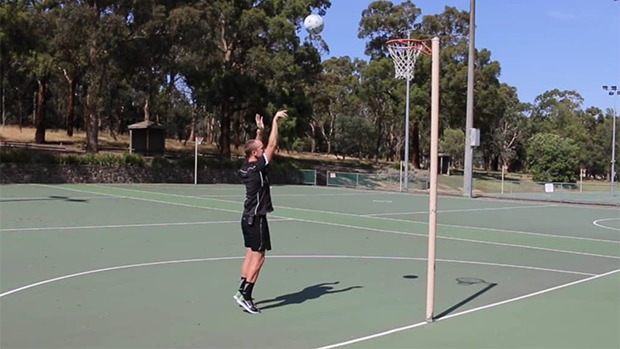
REVISIT OFTEN
While the onus is ultimately on the player to put in the hours in order to make the changes and become comfortable with their shot, it’s also important that their coach checks in on them regularly.
Don’t have one session with the goaler at the start of the holidays, and not see them again until their team’s first training six weeks later. Aim to work with them a couple of times within a fortnight early on, if you’re able to, and then once a fortnight after that, so you can check they’re still on track and iron out any issues.
IT’S OK TO MISS
Remind your goaler that not being accurate initially with a technique change is 100% OK. It’s going to take weeks or even months before they feel as comfortable shooting with their new technique as they did with their old one.
They might miss half, or even more, of their shots in those initial goaling sessions, so it’s important to continue to let them know that the accuracy WILL come with time and practise.
REGISTER NOW: ACCESS ALL 400+ DRILLS AND SKILLS VIDEOS
